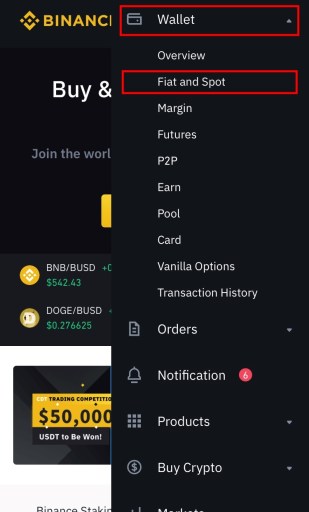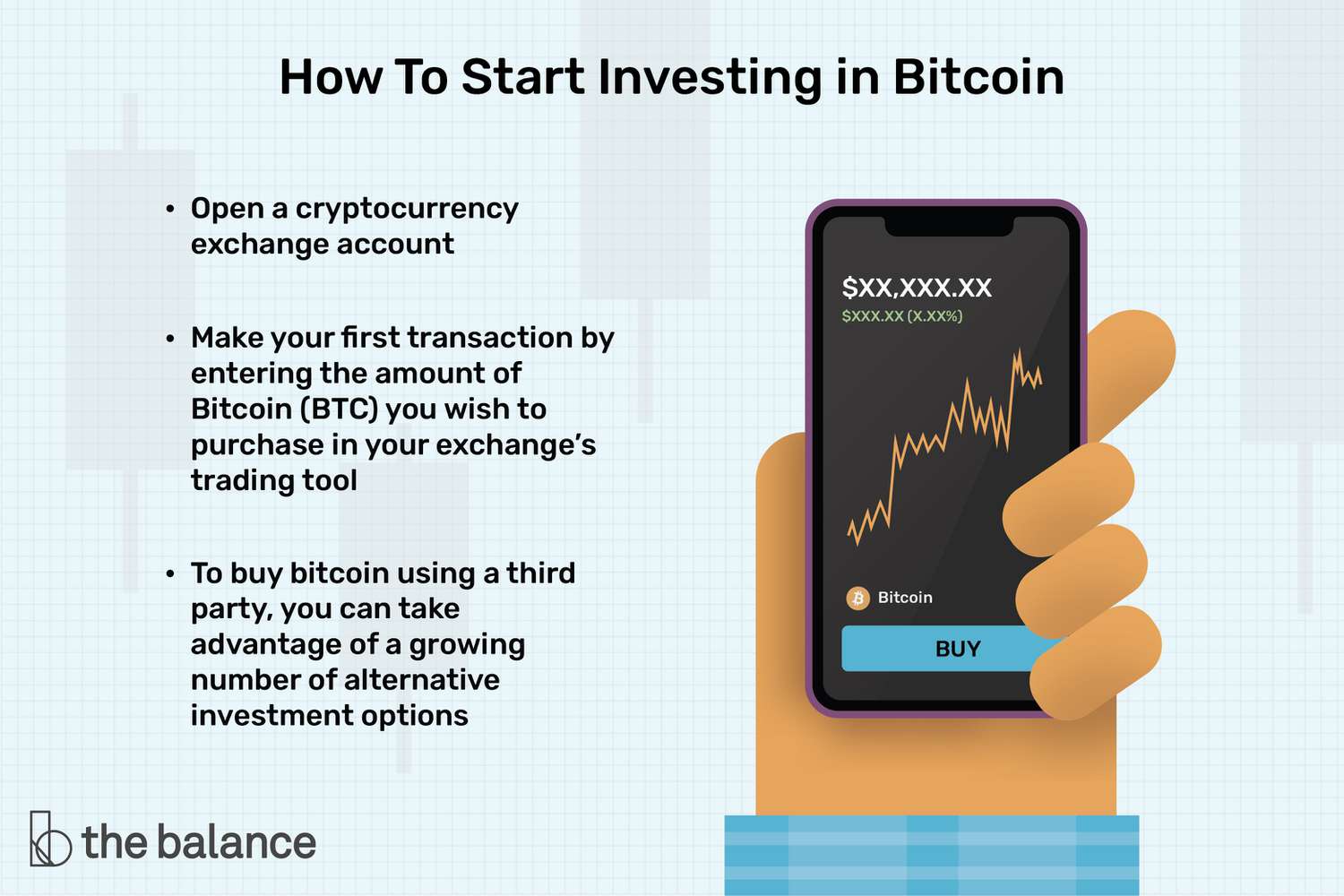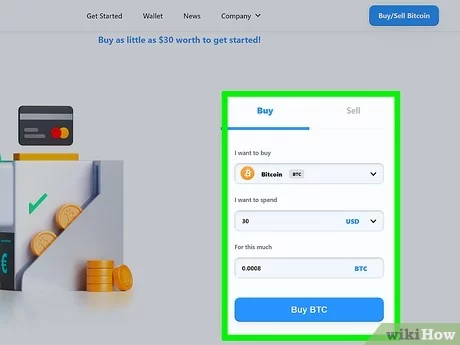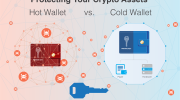If you’re new to the world of Bitcoin and cryptocurrencies, one of the first things you’ll need to understand is how to find your Bitcoin BTC address. Your Bitcoin address is a unique string of alphanumeric characters that serves as a destination for receiving Bitcoin payments. Just like a bank account number, your Bitcoin address allows others to send you Bitcoins securely.
Finding your Bitcoin BTC address is a relatively simple process. In this step-by-step guide, we’ll walk you through the various methods you can use to find your Bitcoin address, whether you’re using a software wallet or a hardware wallet. We’ll also explain why it’s important to keep your Bitcoin address private and secure.
Before we proceed, it’s important to note that each Bitcoin wallet will have its own method of displaying and accessing your Bitcoin BTC address. However, the general process remains the same across most wallets, so this guide will provide you with the basic knowledge you need to find your Bitcoin address regardless of the wallet you’re using.
- Understanding Bitcoin Addresses
- What is a Bitcoin Address?
- Why Do You Need A Bitcoin Address?
- Step-by-Step Guide to Finding Your Bitcoin BTC Address
- Step 1: Open Your Bitcoin Wallet
- Step 2: Navigate to the Receive Section
- Step 3: Locate Your Bitcoin BTC Address
- Is it Safe to Give Out Your Bitcoin Address?
- Potential Risks of Sharing Your Bitcoin Address
- Protecting Your Bitcoin Address
- How to Share Your Bitcoin Address
- Sharing Your Bitcoin Address Online
- Sharing Your Bitcoin Address Offline
- Frequently Asked Questions:
- What is a Bitcoin BTC address?
- How do I find my Bitcoin BTC address?
- Can I have multiple Bitcoin BTC addresses?
- What is the purpose of a Bitcoin BTC address?
- Is a Bitcoin BTC address the same as a wallet?
- Can I change my Bitcoin BTC address?
- Video:
- Bitcoin Wallet Tutorial: How to Use Bitcoin Wallet App for Beginners? (2023 Update)
- How To Buy and Store Bitcoin SAFELY (Step-By-Step Tutorial)
Understanding Bitcoin Addresses

Bitcoin addresses are alphanumeric strings that serve as a unique identifier for a recipient of Bitcoin. These addresses are used to send and receive Bitcoin transactions on the network.
A Bitcoin address is derived from a public key, which is, in turn, derived from a private key. The private key is a secret value that only the owner knows and is used to sign transactions to prove ownership of the funds.
Bitcoin addresses are generated through a process called public key cryptography. This process involves using mathematical algorithms to create a pair of keys: a public key and a private key. The private key is kept secret and is used to create a digital signature for transactions, while the public key is derived from the private key and is shared with others to receive payments.
Bitcoin addresses are represented as a random string of characters, usually starting with a 1 or 3. These addresses are case-sensitive and can contain both uppercase letters and lowercase letters.
It’s important to note that a Bitcoin address is not the same as a wallet. A wallet may contain multiple Bitcoin addresses, allowing the owner to manage and keep track of their funds. Each Bitcoin address within a wallet is associated with a specific private key.
Bitcoin addresses can be generated offline using software known as a Bitcoin wallet or can be generated online through various platforms. When using an online platform or service, it’s important to ensure the security and reputation of the provider to prevent any potential risks or theft of funds.
Furthermore, Bitcoin addresses can also be used in conjunction with QR codes, which are scannable codes that contain the address information. This makes it easier and more convenient to share or receive Bitcoin addresses, especially in person or through mobile devices.
Overall, understanding Bitcoin addresses is essential for anyone looking to participate in the Bitcoin network. By familiarizing yourself with the concept of addresses and how they are generated, you can safely send and receive Bitcoin transactions with confidence.
What is a Bitcoin Address?
A Bitcoin address is a unique identifier that is used to send and receive Bitcoin transactions. It is a string of alphanumeric characters, typically starting with the number “1” or “3”. Addresses can also be represented as QR codes, which can be scanned by a mobile Bitcoin wallet application.
Bitcoin addresses are generated using a combination of public and private keys. The private key is used to sign transactions and should be kept secret. The public key, which is derived from the private key, is used to generate the Bitcoin address.
Bitcoin addresses are not linked to personal identities, making it a pseudonymous way to send and receive Bitcoin. This means that while transactions can be traced on the blockchain, the identities of the parties involved are not necessarily known.
It is important to note that Bitcoin addresses are case-sensitive. One wrong character in the address could result in the loss of funds as transactions cannot be reversed.
Bitcoin addresses can be generated on Bitcoin wallets, which are software applications that allow users to manage their Bitcoin holdings. Wallets can be installed on desktop computers, mobile devices, or accessed online through web-based platforms.
Each Bitcoin address is unique and can only be used once for a transaction. Using a different address for each transaction improves privacy and security, as it is more difficult to trace transactions back to a specific person or entity.
Why Do You Need A Bitcoin Address?
Bitcoin addresses play a crucial role in the world of digital currency. They serve as unique identifiers that facilitate transactions and ensure the security of your funds. Here’s why you need a Bitcoin address:
- Receiving Payments: Your Bitcoin address is like your digital wallet. It allows you to receive payments from others, whether it’s for goods, services, or donations.
- Sending Payments: With a Bitcoin address, you can send payments to other individuals, businesses, or organizations. It’s a secure and fast way to transfer funds globally.
- Security: Bitcoin addresses are generated using cryptographic algorithms, making them extremely secure. As long as you keep your private key safe, only you have control over your funds.
- Tracking Transactions: Each transaction made using Bitcoin is recorded on the blockchain, a publicly accessible ledger. Your Bitcoin address helps you keep track of your transactions and see the history of your payments.
- Wallet Integration: Bitcoin addresses are often used to link your digital currency wallet with various services and platforms. By providing your unique address, you can access additional features and services offered by these platforms.
In summary, having a Bitcoin address allows you to send and receive payments, ensures the security of your funds, enables transaction tracking, and provides access to additional wallet features. It’s an essential element of participating in the Bitcoin ecosystem and engaging in digital currency transactions.
Step-by-Step Guide to Finding Your Bitcoin BTC Address

Whether you are new to Bitcoin or have been using it for a while, it is important to be able to find your Bitcoin BTC address. Your BTC address is like your bank account number in the Bitcoin network. It is a unique identifier that allows others to send Bitcoin to you.
Here is a step-by-step guide to help you find your Bitcoin BTC address:
- Open your preferred web browser.
- Visit the official website of Bitcoin.com.
- Once on the Bitcoin.com website, locate and click on the “Wallet” tab.
- If you already have a Bitcoin wallet, enter your login credentials and sign in. If you don’t have a wallet yet, click on the “Create Wallet” button and follow the instructions to create a new wallet.
- Once you are logged in, navigate to the “Receive” section of your Bitcoin wallet. This section will usually be clearly labeled and can be found in the main menu or sidebar.
- In the “Receive” section, you should see a list of your Bitcoin addresses. These addresses are a combination of letters and numbers and start with a 1 or 3. Each address represents a separate wallet within your Bitcoin wallet software.
- Select the Bitcoin address you want to use. If you only have one address listed, you can use that one. If you have multiple addresses, choose the one that you want to share with others.
- Once you have selected your Bitcoin address, you can copy it to your clipboard by clicking on the “Copy” button next to the address. You can now paste this address wherever you need to share it, such as in an email, on a website, or in a Bitcoin payment request.
- You can also print a QR code associated with your Bitcoin address by clicking on the “QR Code” button next to the address. This allows others to conveniently scan the code with their Bitcoin wallet app to send you Bitcoin.
That’s it! You have successfully found your Bitcoin BTC address on the Bitcoin.com website. Remember to keep your BTC address private and share it only with trusted individuals or entities to ensure the security of your funds.
Note: Make sure to double-check the accuracy of your Bitcoin address before sharing it. Bitcoin transactions are irreversible, so if you send Bitcoin to an incorrect address, you may lose your funds.
| Bitcoin.com | www.bitcoin.com |
Step 1: Open Your Bitcoin Wallet
To find your Bitcoin BTC address, the first step is to open your Bitcoin wallet. A Bitcoin wallet is a software application or a hardware device that allows you to send, receive, and store Bitcoin.
There are various types of Bitcoin wallets available, including web wallets, desktop wallets, mobile wallets, and hardware wallets. You can choose the type of wallet that best suits your needs and preferences.
If you don’t have a Bitcoin wallet yet, you can visit the website bitcoin.com to download a Bitcoin wallet or find recommendations for different wallet options.
Once you have selected and installed your Bitcoin wallet, open the application on your device. Depending on your wallet, you may need to set up a password or provide some basic information for account creation.
After successfully setting up your Bitcoin wallet, you will be able to manage your Bitcoin transactions, view your balance, and most importantly, find your unique Bitcoin BTC address.
Step 2: Navigate to the Receive Section
Once you have logged into your account on bitcoin.com, look for the “Receive” or “Receive Bitcoin” option in the navigation menu. This option is usually located in a prominent position, such as the top or side menu of the website.
If you are using a mobile application, you may need to tap on a menu icon or swipe to access the navigation menu.
Click on the “Receive” option to proceed to the receive section of the website or application.
In this section, you will find the necessary information to share with others who want to send you Bitcoin.
- Bitcoin Address: A string of alphanumeric characters that represents your unique Bitcoin address. This is similar to your bank account number, and you will need to provide it to someone who wants to send you Bitcoin.
- QR Code: A square-shaped barcode that contains your Bitcoin address. Some wallets allow you to scan this QR code instead of manually entering the Bitcoin address.
- Amount: If you want to receive a specific amount of Bitcoin, you can generate a payment request by entering the desired amount in this field.
You can copy your Bitcoin address or QR code and share it with others via email, messaging apps, or by simply showing it on your device’s screen.
Note that Bitcoin addresses are case sensitive, so make sure to double-check when entering or sharing your address.
Step 3: Locate Your Bitcoin BTC Address

Once you have set up your Bitcoin wallet, it’s time to locate your Bitcoin BTC Address to receive or send Bitcoins. Your Bitcoin BTC Address is like your unique identifier on the Bitcoin network, and it allows others to send Bitcoins to you.
Here are a few ways you can locate your Bitcoin BTC Address:
- Using a Wallet App: Most Bitcoin wallet apps have a user-friendly interface where you can easily find your Bitcoin BTC Address. Simply open your wallet app and look for the “Receive” or “Receive BTC” option. This should display your Bitcoin BTC Address along with a QR code.
- Using a Web Wallet: If you use a web wallet, you can usually find your Bitcoin BTC Address by logging into your account and navigating to the “Receive” or “Receive BTC” section. Here, your Bitcoin BTC Address will be displayed along with a QR code.
- Using a Desktop Wallet: Desktop wallets often provide an option to view your Bitcoin BTC Address. Look for a tab or button that says “Receive” or “Receive BTC”. When you select this option, your Bitcoin BTC Address will be shown on the screen.
- Using a Paper Wallet: If you have a paper wallet, you can find your Bitcoin BTC Address by scanning the QR code printed on the paper. Alternatively, you can manually enter the public key associated with your paper wallet to locate your Bitcoin BTC Address.
Remember, your Bitcoin BTC Address is a long string of alphanumeric characters, so make sure you double-check it before sending or receiving any Bitcoins. It’s also a good practice to save this address securely and keep it private to protect your funds.
Now that you know how to locate your Bitcoin BTC Address, you can start receiving or sending Bitcoins to and from your wallet.
Is it Safe to Give Out Your Bitcoin Address?

If you are new to the world of Bitcoin and cryptocurrencies, you might be wondering whether it is safe to give out your Bitcoin address. Here, we will discuss the safety aspects of sharing your Bitcoin address and some important considerations.
Address Confidentiality
When you give out your Bitcoin address, you are essentially sharing a string of characters that represents your wallet. It is safe to share your Bitcoin address as it is similar to sharing your bank account number with someone. Your Bitcoin address alone does not provide any confidential information or access to your funds.
Address Reuse
One potential risk of sharing your Bitcoin address is address reuse. If you consistently use the same Bitcoin address for multiple transactions, it could compromise your privacy and security. It is generally recommended to generate a new Bitcoin address for each transaction to maintain anonymity and prevent tracking.
Third-Party Risks
When you share your Bitcoin address with a third-party, such as an exchange or a merchant, there are additional risks involved. These entities may have security vulnerabilities that could potentially expose your address to hackers or unauthorized access. It is important to choose reputable platforms and take necessary security measures to mitigate these risks.
Protecting Your Private Key
While your Bitcoin address alone is safe to share, it is crucial to protect your private key. The private key is necessary to access and control your funds. If someone gains access to your private key, they could potentially steal your bitcoins. Make sure to keep your private key secure and never share it with anyone.
Conclusion
In conclusion, sharing your Bitcoin address is generally safe, but you should take precautions to protect your privacy and security. Avoid address reuse, choose reputable platforms, and always keep your private key secure. By following these best practices, you can safely give out your Bitcoin address when necessary.
Potential Risks of Sharing Your Bitcoin Address
While Bitcoin addresses are meant to be public and shareable, there are still potential risks associated with sharing your Bitcoin address:
- Privacy Concerns: Sharing your Bitcoin address publicly can compromise your privacy. With your address, anyone can view your transaction history, see the balance of your wallet, and potentially trace your funds.
- Target for Hackers: By publicly sharing your Bitcoin address, you may attract the attention of hackers who are looking to steal funds. They can use various techniques such as phishing or malware to gain access to your wallet.
- Scammers and Phishing Attempts: When you share your Bitcoin address, scammers may try to trick you into sending funds to them by imitating a legitimate transaction. They can send you fake invoices or ask you to donate to fraudulent causes.
- Loss of Anonymity: Bitcoin addresses are pseudonymous, meaning they do not directly reveal the identity of the owner. However, by associating your Bitcoin address with your real-life identity, you may risk losing the anonymity that cryptocurrencies provide.
- Target for Physical Theft: If you publicly share your Bitcoin address offline or in person, you may become a target for physical theft. Someone who knows your address can try to physically steal your device or force you to send funds.
It is important to weigh the benefits of sharing your Bitcoin address against these potential risks. Consider using different addresses for different purposes, using techniques to enhance your privacy, and being cautious of any suspicious requests or activities related to your Bitcoin address.
Protecting Your Bitcoin Address
When it comes to protecting your Bitcoin address, there are several steps you can take to ensure the safety and security of your funds. Here are some important measures:
- Use a hardware or offline wallet: Storing your Bitcoin in a hardware wallet or an offline wallet provides an added layer of security as these wallets are not connected to the internet and are less susceptible to hacking attempts.
- Keep your private keys offline: Private keys are essential for accessing your Bitcoin address. By keeping them offline, you significantly reduce the risk of them being stolen by online hackers.
- Enable two-factor authentication: Two-factor authentication adds an extra layer of security to your Bitcoin address by requiring another form of verification, such as a code sent to your mobile device, before allowing access.
- Regularly update your software: Bitcoin wallets and software often release updates that contain important security patches. Make sure to stay up to date with the latest version to protect your address from any vulnerabilities.
- Be cautious of phishing attempts: Cybercriminals may try to trick you into revealing your Bitcoin address or private keys through phishing scams. Always double-check the authenticity of any emails or websites before providing any personal information.
- Use a strong, unique password: When setting up your Bitcoin wallet, choose a strong password that includes a combination of letters, numbers, and special characters. Avoid using common passwords or ones that can be easily guessed.
- Back up your wallet: Regularly back up your wallet, either by creating a physical copy of your private keys or using a secure cloud storage service. This ensures that you can recover your funds even if your device is lost or damaged.
By implementing these precautionary measures, you can greatly enhance the security of your Bitcoin address and protect your funds from potential threats or theft.
How to Share Your Bitcoin Address
If you want to receive Bitcoin from someone, you need to share your Bitcoin address with them. Here’s a step-by-step guide on how to do it:
- Open your Bitcoin wallet: Launch the Bitcoin wallet application on your device.
- Find your Bitcoin address: Look for the “Receive” or “Receive Bitcoin” tab in your wallet. This is where you can find your Bitcoin address.
- Copy your Bitcoin address: Click on your Bitcoin address to copy it. Alternatively, you can use the “Copy” or “Copy Address” button if available.
- Share your Bitcoin address: Now you need to share your Bitcoin address with the person who wants to send you Bitcoin. You can do this using various methods, such as:
- Sending an email with your Bitcoin address.
- Sending a text message or instant message with your Bitcoin address.
- Sharing your Bitcoin address through a social media platform.
- Providing your Bitcoin address in person.
- Verify the Bitcoin address: It’s crucial to double-check that you have copied the correct Bitcoin address and shared it accurately. Bitcoin transactions are irreversible, so if you make a mistake, you may lose your funds.
By following these steps, you can easily share your Bitcoin address and start receiving Bitcoin from others. Remember to always be cautious when sharing your address and ensure you are transacting with trusted individuals.
Sharing Your Bitcoin Address Online
When it comes to sharing your Bitcoin address online, it’s important to consider the potential risks and take steps to protect your privacy and security. Here are a few important things to keep in mind:
- Be cautious of where you share your address: Only share your Bitcoin address on trustworthy platforms and websites. Avoid sharing it on public forums, social media platforms, or any other place where it could be easily accessible to scammers or hackers.
- Encrypt your address: Consider encrypting your Bitcoin address before sharing it online. This can help add an extra layer of security and make it more difficult for anyone to misuse or track your address.
- Use a dedicated address for different purposes: It’s a good practice to use different Bitcoin addresses for different purposes. For example, you might have one address for receiving payments from friends and family, and another address for making online purchases.
- Beware of phishing attempts: Be cautious of any emails or messages you receive asking for your Bitcoin address. Scammers may use phishing techniques in an attempt to steal your Bitcoins or personal information.
Overall, it’s important to be mindful of the information you share online and take steps to protect your Bitcoin address. By being cautious and following best practices, you can help ensure the security of your Bitcoin holdings.
Sharing Your Bitcoin Address Offline

If you want to share your Bitcoin address offline, there are several methods you can use:
- 1. Write it down: You can write your Bitcoin address on a piece of paper and give it to the person you want to share it with. This method is simple and doesn’t require any technical knowledge.
- 2. Print it: If you have access to a printer, you can print your Bitcoin address on a physical medium, such as a business card or a flyer. This can be a convenient way to share your address at events or meetups.
- 3. Share via QR code: You can generate a QR code for your Bitcoin address using a QR code generator. The QR code can then be scanned by the recipient using a Bitcoin wallet app to easily obtain your address.
- 4. Use a Bitcoin address sharing service: There are online services that allow you to create a web page or an image displaying your Bitcoin address. You can then share the URL or the image with others.
Regardless of the method you choose, make sure to double-check the accuracy of your Bitcoin address before sharing it. Bitcoin transactions are irreversible, so if you provide an incorrect address, you may lose your funds.
Remember to exercise caution when sharing your Bitcoin address offline to minimize the risk of fraud or theft. It’s always a good idea to only share your address with trusted individuals or organizations.
Frequently Asked Questions:
What is a Bitcoin BTC address?
A Bitcoin BTC address is a unique identifier that represents a destination for a Bitcoin transaction. It is a string of alphanumeric characters that starts with a “1” or “3”.
How do I find my Bitcoin BTC address?
To find your Bitcoin BTC address, you can open your Bitcoin wallet and navigate to the “Receive” or “Request” section. Here, you will find your address listed along with a QR code that can be scanned by others to send you Bitcoin.
Can I have multiple Bitcoin BTC addresses?
Yes, you can have multiple Bitcoin BTC addresses. In fact, it is recommended to use a new address for each transaction to enhance privacy and security.
What is the purpose of a Bitcoin BTC address?
The purpose of a Bitcoin BTC address is to receive Bitcoin. It is used to identify the destination of a transaction and ensure that the funds are sent to the correct recipient.
Is a Bitcoin BTC address the same as a wallet?
No, a Bitcoin BTC address is not the same as a wallet. A wallet is a software or hardware device used to store and manage Bitcoin, while an address is a unique identifier associated with a wallet that is used to receive funds.
Can I change my Bitcoin BTC address?
Yes, you can change your Bitcoin BTC address. Most Bitcoin wallets allow you to generate a new address whenever you need one. However, it is important to note that any funds sent to your old address will still be accessible from your wallet.
Video:
Bitcoin Wallet Tutorial: How to Use Bitcoin Wallet App for Beginners? (2023 Update)
How To Buy and Store Bitcoin SAFELY (Step-By-Step Tutorial)








